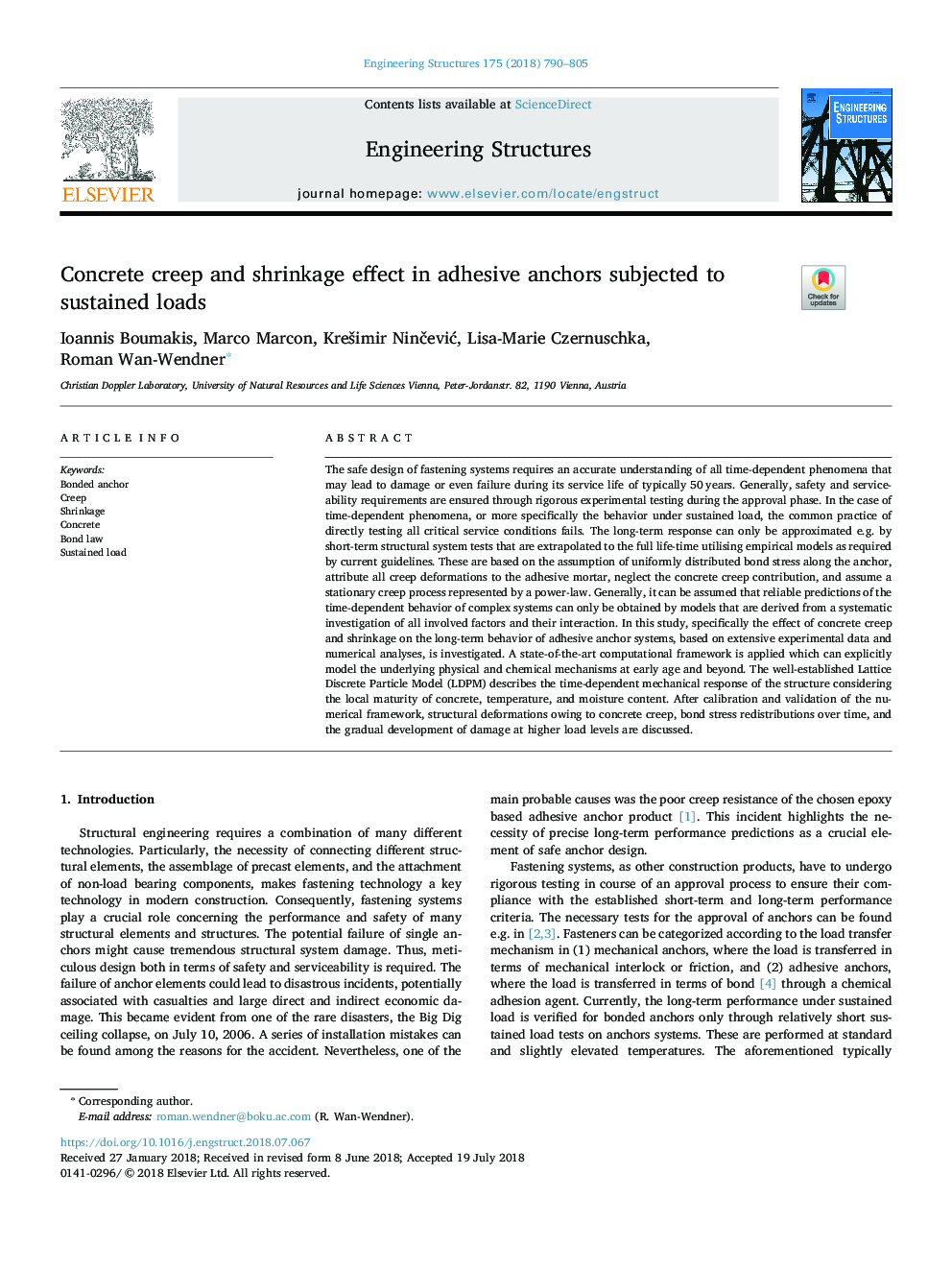| Article ID | Journal | Published Year | Pages | File Type |
|---|---|---|---|---|
| 10126940 | Engineering Structures | 2018 | 16 Pages |
Abstract
The safe design of fastening systems requires an accurate understanding of all time-dependent phenomena that may lead to damage or even failure during its service life of typically 50â¯years. Generally, safety and serviceability requirements are ensured through rigorous experimental testing during the approval phase. In the case of time-dependent phenomena, or more specifically the behavior under sustained load, the common practice of directly testing all critical service conditions fails. The long-term response can only be approximated e.g. by short-term structural system tests that are extrapolated to the full life-time utilising empirical models as required by current guidelines. These are based on the assumption of uniformly distributed bond stress along the anchor, attribute all creep deformations to the adhesive mortar, neglect the concrete creep contribution, and assume a stationary creep process represented by a power-law. Generally, it can be assumed that reliable predictions of the time-dependent behavior of complex systems can only be obtained by models that are derived from a systematic investigation of all involved factors and their interaction. In this study, specifically the effect of concrete creep and shrinkage on the long-term behavior of adhesive anchor systems, based on extensive experimental data and numerical analyses, is investigated. A state-of-the-art computational framework is applied which can explicitly model the underlying physical and chemical mechanisms at early age and beyond. The well-established Lattice Discrete Particle Model (LDPM) describes the time-dependent mechanical response of the structure considering the local maturity of concrete, temperature, and moisture content. After calibration and validation of the numerical framework, structural deformations owing to concrete creep, bond stress redistributions over time, and the gradual development of damage at higher load levels are discussed.
Keywords
Related Topics
Physical Sciences and Engineering
Earth and Planetary Sciences
Geotechnical Engineering and Engineering Geology
Authors
Ioannis Boumakis, Marco Marcon, KreÅ¡imir NinÄeviÄ, Lisa-Marie Czernuschka, Roman Wan-Wendner,
